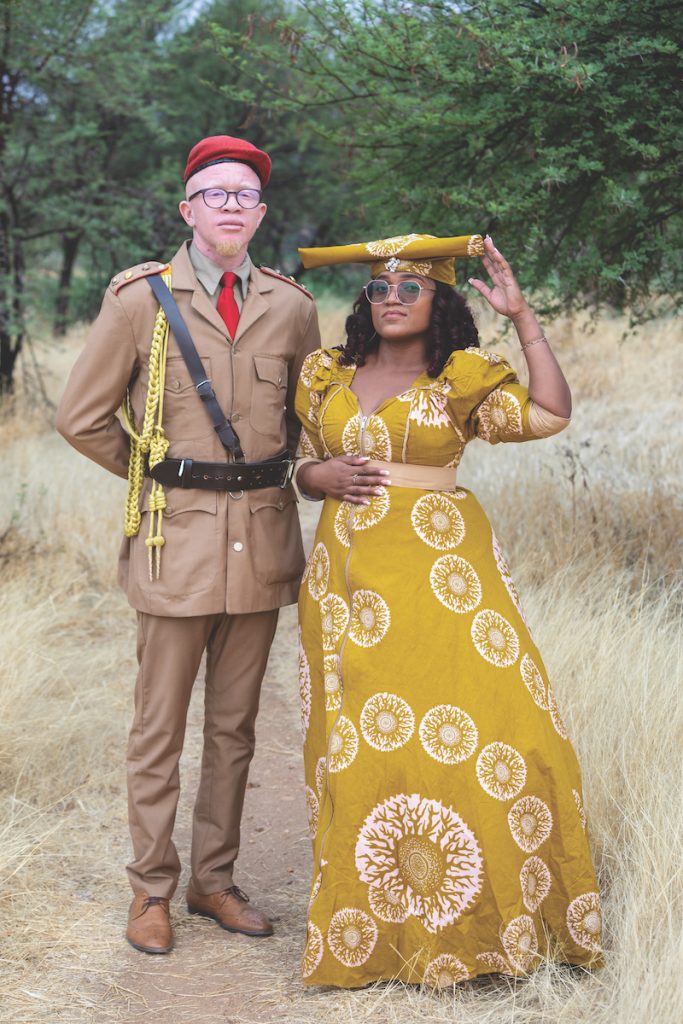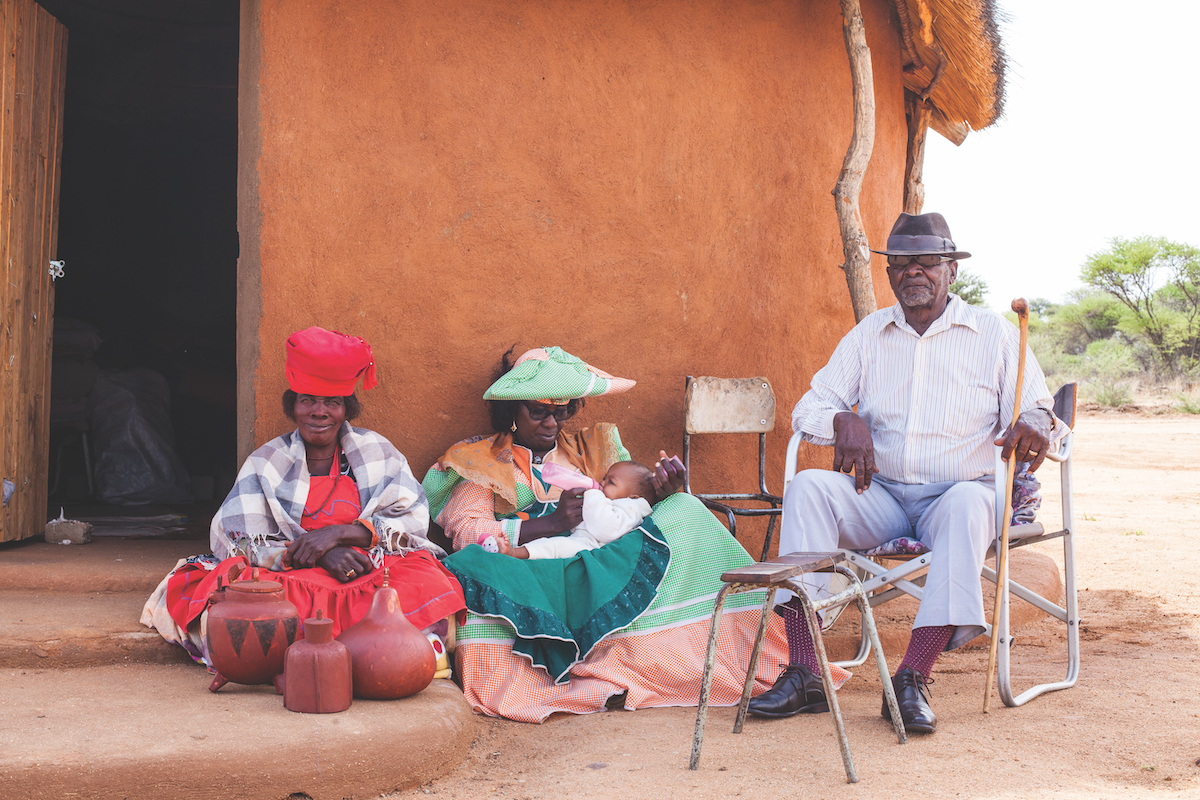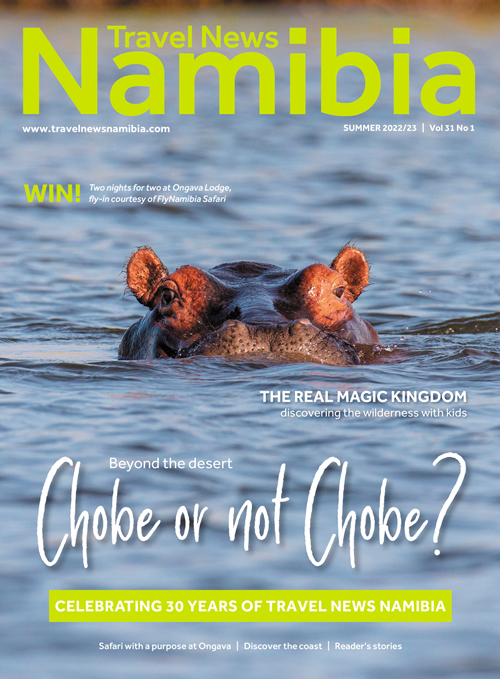

THE HERERO - A Namibian culture seeped in tradition
Omumborombonga. I recall that I stood barefoot and wide-eyed at one of the cattle posts on the farm when I first heard the enchanting Herero word. I was listening with childlike wonder to my beloved Onkel Lothar speaking in the language of the farmworkers at the borehole that was fondly named Omumborombonga.
Text Linda De Jager
Photographs Le Roux van Schalkwyk
From the Summer 2022/23 issue
I was about seven years old at the time: years measured in seconds by the audible ticks of the old-fashioned clock in the farmhouse – punctuated by an hourly chime: a ghostly gong, gong.
On the farm Kanambo, close to Otjiwarongo in central Namibia, Lothar Wilhelm farmed with cattle. He shared the Herero people’s love of these animals. It is common knowledge in Namibia that the Herero once were nomadic pastoralists with large herds of cattle – and that they are drawn to farming to this day.
The Herero are one of roughly nine cultural groups in Namibia: the other eight are the Basters, the San, the Caprivians, the Damara, the Kavango, the Nama and the Wambo plus those loosely grouped as people of European origin.
Visitors are fascinated by the stately Herero women in traditional late 19th century type of dresses – a style introduced by the wives of German missionaries. But few know that the shape of the headdress mimics the horns of cattle, the ultimate symbol of wealth in the Herero culture.
Much of this culture was lost in the devastating Herero rebellion between 1904 and 1905 against German colonial rule. This tragic chapter in our history gave rise to what is known as a Truppenspieler movement. It explains the uniforms which some of the Herero men still wear in what is now known as the Red Band Movement. Elements of German uniforms in the colonial era were incorporated in the traditional wear of the men. Every year on 26 August deceased leaders are commemorated in a mass gathering of Herero people wearing “traditional” clothes.
This is where you will find many words stemming from the experience with German culture. The word omunavihako vivari (the one with two stripes) speaks to the fact that corporals and sergeants were named according to the number of stripes.
Onkel Lothar spoke Otjiherero fluently – and thereby opened a wonderland of words for me. But I did not have to fall (like Alice) down a rabbit hole to explore the origin of the word Omumborombonga.
The answer lies in a large tree trunk. This is what the large Namibian leadwood tree (Combretum imberbe) is called in Herero. The tree forms the centre of the Herero culture’s creation myth.
The Herero elders recount the legend that the first man and woman, as well as oxyn came forth from this sacred tree at the beginning of time. Lesser animals, like sheep and goats, however, emerged from underneath a flat stone. The first ancestor was known as Mukuru – and the first woman as Kamungundu. Some say the tribal name Herero is derived from ova-erero (the people of yesterday).
In addition to worshiping the supreme being Mukuru, or Ndjambi, for his kindness, the Herero traditionally worship their ancestors.
While I am aware that respect for ancestors prevails in modern-day Namibia, I asked a translator and Otjiherero-speaker, Richard Tjitua, which traditions were still alive today. There used to be a time when the elders still bowed reverently with the words Tate Mukuru u Zera (Father thou art holy) whenever they passed the Omumborombonga tree.
Says Richard: “Many Hereros adopted the Christian faith, and they learned from the Bible that the dead are conscious of nothing and do not exist somewhere else. Thus they cannot harm or help the living. This understanding has caused many to strongly reject customs and rituals that promote ancestor worship. Other Hereros who believe in God know that he condemns anything to do with the appeasing of their dead ancestors. Yet, they still practise ancestor worship out of fear of the dead, and because of peer and family pressure.”
According to Richard, an uncle is viewed as a very important person. “The uncle is the brother of my mother. We don’t refer to my father’s brother as uncle, as in the Western culture. Rather, he is another father, be it a younger or elder father. He helps with the decisions in marriage negotiations, funeral arrangements and other family matters.”
Richard continues: “They wouldn’t give the bride to the in-laws without the groom’s uncle. And the bride’s uncles are the ones involved in deciding who the bride will be. The only exception is when the bride’s mother is married and the bride lives with her mother’s husband (be it her own father or step father). Even so, they would still want the uncle to be present. A younger brother is not allowed to marry before his older brother, or else he must pay with one head of cattle. This could also be converted into monetary value.” Richard says this tradition is gradually becoming obsolete.
“Another custom that is still practiced in some Herero communities is the brother-in-law marriage. When a husband dies, his wife is offered to one of her brother-in-laws. Of course, she can choose whether to marry one of them or not. This practice has its origin in the Bible. It was practiced among ancient Israelites.”
In 2017, the old clock in the farmhouse chimed my beloved Onkel’s final hour. Gone were the days of carefree school holidays on the farm, horse riding, swimming in the Bassin and sharing funny stories around the square kitchen table.
We gathered under the welcoming shade of the trees in the family cemetery at Kalkfeld – also the last resting place of my ancestors. My German-born grandfather, Hans Paul Friedrich Wilhelm, came to Namibia by ship in 1938 with nothing but a bunch of dried flowers for his Namibian bride-to-be. The cemetery also turned out to be her last resting place. The wild and willful Gertrud Wilhelm finally had to make her peace with his artistic temperament – so unfit for toiling as a farmer on African soil. She was buried right next to him, a stone’s throw from her own father, Otto Kleiber, who came to Namibia from Germany with one of the first Schutztruppe contingents before the First World War. Since then, the Herero people’s own history and stories – some of tragedy, others of joy – became intertwined with those of my family. Like the twisted roots of the leadwood tree. They became part of the web of the day-to-day lives of my German forebears, branching into the big tree of the flawed history that shaped us all.
They were already waiting at the cemetery’s fence to pay their last respects by the time I arrived for the funeral ceremony. Upright. Proud. Stoic. Many of them were wearing suits dusted off and repurposed for the special occasion – out of my uncle’s very own wardrobe. Some of the neckties were so old-fashioned that they looked vaguely familiar. I swallowed the tears and felt a deep gratitude to these people whose culture enriched my own. During his last days on the farm, Lothar frequently lost his balance, it therefore became the norm that his workers, Itchi, Festus, Reinhard and Esay, became his watchful shadows and always walked on his left, right and back in an unspoken truce to keep him upright if need be – and to keep up appearances as to who was really in charge of the farming.
I somehow saw my larger-than-life Onkel turn grey overnight, as if cued by a ghostly gong-gong of a clock and set into fast-forward mode by a magic word in a foreign language spoken by a wizard in a children’s tale.
When it was time to say goodbye the farm workers stepped forward, one by one (like the rest of the family), and paid their respects with a simple fistful of sand strewn onto the coffin. As the coffin was placed into the grave we were all thrown off balance by the realisation that the solid earth beneath our feet was made up of mere sand too – and can unexpectedly crumble during times of grief.
When it was my turn to open my fist and let go of so much more than a handful of dust, I recalled the Herero prayer to their supreme Mukuru as a fitting tribute (in the presence of my ancestors) to a very kind man:
Place thy hand across my eyes so
that I may see only good.
Breathe thy breath upon my lips so
that I may speak no wickedness.
Whisper thy name in my ears so that what I hear will soothe my soul.
For when my soul is called by thee
it must come as clean and fresh
as the rain thou sendest in the spring
of the year.






